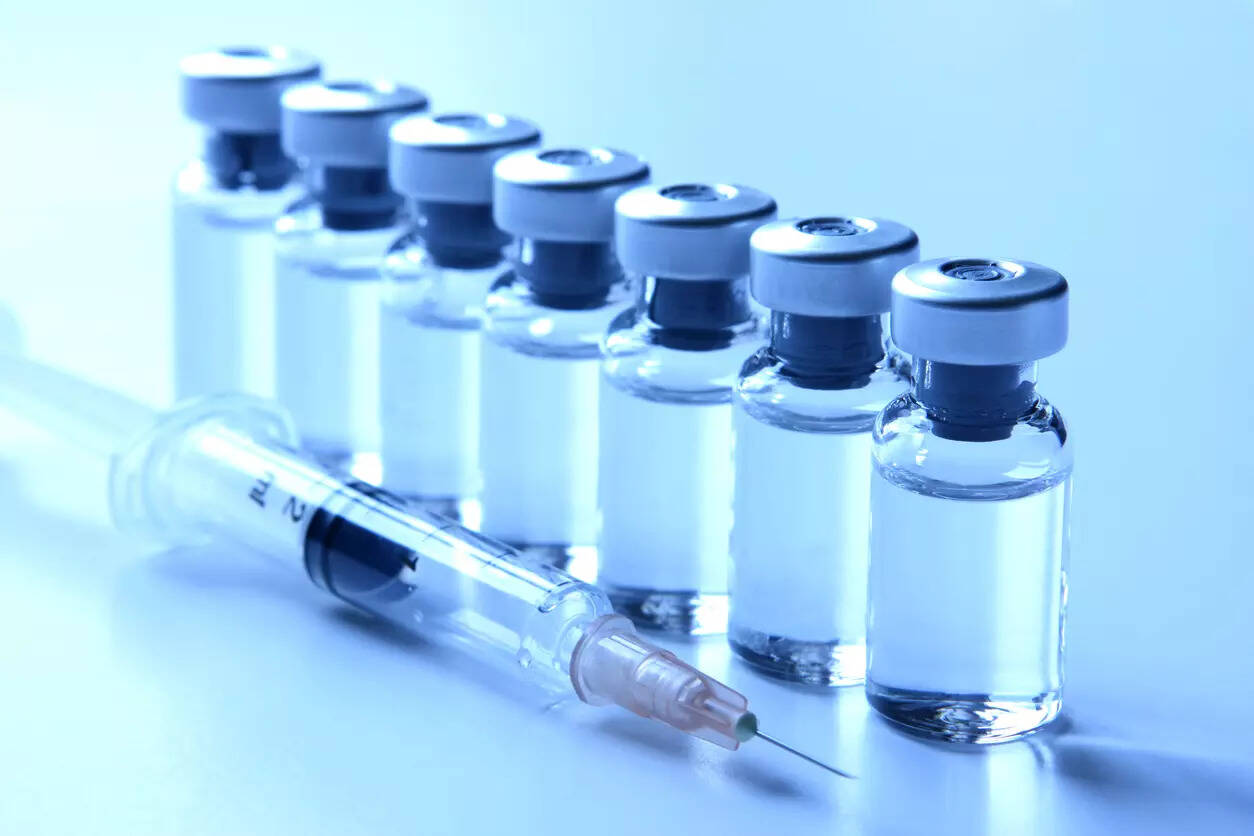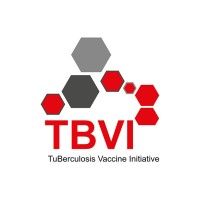预约演示
更新于:2025-09-20
MTBVAC (Biofabri)
更新于:2025-09-20
概要
基本信息
原研机构 |
最高研发阶段临床3期 |
首次获批日期- |
最高研发阶段(中国)- |
特殊审评- |
登录后查看时间轴
关联
8
项与 MTBVAC (Biofabri) 相关的临床试验NCT06272812
A Phase 2b, Double-blind, Randomized, Placebo-controlled Study to Evaluate the Efficacy, Safety and Immunogenicity of a Candidate Tuberculosis (TB) Vaccine, MTBVAC, Against TB Disease in Interferon Gamma Release Assay Positive Adolescents and Adults Aged 14-45 Years, Living in a TB Endemic Region.
A Phase 2b, double-blind, randomized, placebo-controlled study to evaluate the efficacy, safety and immunogenicity of a candidate tuberculosis (TB) vaccine, MTBVAC, against TB disease in interferon gamma release assay positive adolescents and adults aged 14-45 years, living in a TB endemic region.
开始日期2025-02-19 |
申办/合作机构 |
NCT05947890
A Phase 2a Clinical Trial to Evaluate the Safety and Immunogenicity of MTBVAC in Adolescents and Adults Living With and Without HIV in South Africa
The purpose of this study is to evaluate the safety and immunogenicity of MTBVAC in adolescents and adults living with and without HIV in South Africa
开始日期2024-01-30 |
申办/合作机构 |
NCT04975178
Randomised, Double-Blind, Controlled Phase 3 Trial to Evaluate the Efficacy, Safety and Immunogenicity of MTBVAC in Healthy HIV Unexposed (HU) and HIV Exposed Uninfected (HEU) Newborns in Tuberculosis-Endemic Regions of Sub-Saharan Africa
The objective of this project is to demonstrate safety, immunogenicity and improved efficacy of the new live attenuated M. tuberculosis vaccine called MTBVAC in a Phase 3 efficacy trial in HIV-uninfected infants born to HIV-infected and HIV-uninfected mothers as compared to standard of care BCG vaccination. The proposal builds upon a group of TB vaccine development partners in Europe and sub-Saharan Africa established in a previous EDCTP-supported project. It creates an expanded consortium of clinical trial partners for the optimal implementation of a large infant efficacy trial of MTBVAC in high TB incidence settings. New capacity for efficacy trials in infants will be a valuable resource for the TB vaccine development community. The proposal will create a network of institutions in three TB endemic African countries with enhanced laboratory capacity to conduct TB vaccine immunology studies and to bio-bank samples to discover immune correlates of vaccine-mediated protection.
开始日期2022-10-17 |
申办/合作机构  Biofabri SL Biofabri SL [+7] |
100 项与 MTBVAC (Biofabri) 相关的临床结果
登录后查看更多信息
100 项与 MTBVAC (Biofabri) 相关的转化医学
登录后查看更多信息
100 项与 MTBVAC (Biofabri) 相关的专利(医药)
登录后查看更多信息
43
项与 MTBVAC (Biofabri) 相关的文献(医药)2025-06-01·Lancet Global Health
Diagnostic dilemmas and strain diversity in the MTBVAC phase 1b–2a trial in adults
Article
作者: Gong, Wenping ; Liu, Yanhua
2025-06-01·Lancet Global Health
Live-attenuated Mycobacterium tuberculosis vaccine, MTBVAC, in adults with or without M tuberculosis sensitisation: a single-centre, phase 1b–2a, double-blind, dose-escalation, randomised controlled trial
Article
作者: Mouton, Angelique ; Imbratta, Claire ; Rozot, Virginie ; Meyer, Faheemah ; Segelaar, Carmen ; Rodríguez, Esteban ; Ginsberg, Ann ; Pillay, Cadwill ; Mangali, Sandisiwe ; Van Der Merve, Arrie ; Companie, Alessandro ; Africa, Hadn ; Erasmus, Mzwandile ; Aguilo, Nacho ; Bilek, Nicole ; Reid, Tim ; Rossouw, Susan ; Shenje, Justin ; Young, Carly ; Nkambule, Hlengiwe ; Luabeya, Angelique Kany Kany ; Doce, Juana ; Mulenga, Humphrey ; Tait, Dereck ; Steyn, Marcia ; Cloete, Yolundi ; Barnard, Liezl ; Magawu, Patricia ; Geldenhuys, Hennie ; Diamond, Bongani ; Scriba, Thomas J ; Kaskar, Masooda ; Opperman, Fajwa ; Russell, Marisa ; Schreuder, Constance ; Verster, Elmien ; Raphela, Rodney ; Rutkowski, Kathryn ; Valley, Habibullah ; Tameris, Michele ; Swanepoel, Liticia ; Nambida, Onke ; Veldtsman, Helen ; Erasmus, Margareth ; Mactavie, Lauren ; Mabwe, Simbarashe ; Mendelsohn, Simon C ; Ratangee, Frances ; Veldsman, Ashley ; Jelsbak, Ingrid Murillo ; Tyambetyu, Petrus ; Hatherill, Mark ; Leopeng, Thelma ; Botes, Natasja ; Davids, Ilse ; Hunt, Devin ; Martin, Carlos ; De Kock, Marwou ; Puentes, Eugenia ; Makhete, Lebohgang ; Fisher, Michelle ; Jaxa, Lungisa ; Musvosvi, Munyaradzi ; Noble, Julia ; Khomba, Gloria ; Van Rooyen, Johanna ; Abrahams, Charmaine
BACKGROUND:
An effective adult vaccine is needed to control tuberculosis. We evaluated the safety and immunogenicity of a live-attenuated Mycobacterium tuberculosis vaccine (MTBVAC).
METHODS:
This single-centre, phase 1b-2a, double-blind, dose-escalation, randomised controlled trial (NCT02933281) enrolled South African adults previously vaccinated with BCG, who were HIV negative and aged 18-50 years, with or without M tuberculosis sensitisation assessed by QuantiFERON-tuberculosis Gold-Plus assay (QFT). Participants were recruited from the local community and randomly allocated (2:1) to receive MTBVAC (5 × 103, 5 × 104, 5 × 105, or 5 × 106 colony-forming unit [CFU] doses) or BCG revaccination (5 × 105 CFU dose). The primary outcomes were the occurrence of systemic solicited adverse events within 7 days and unsolicited adverse events within 28 days after vaccination, the occurrence of solicited and unsolicited injection-site reactions within 84 days after vaccination, and the occurrence of serious adverse events (SAEs) until the end of study, 365 days after vaccination. Data were analysed per modified intention to treat. The trial is now complete and closed.
FINDINGS:
Between Jan 15, 2019, and Sept 7, 2020, 485 participants provided consent and were screened. 144 participants were enrolled and 143 (99%) were vaccinated. BCG was administrated to 47 (33%) of 143 and MTBVAC to 96 (67%) of 143. 12 participants with QFT-negative results and 12 with QFT-positive results were randomly allocated to receive each dose of MTBVAC and 24 participants with QFT-negative results and 24 with QFT-positive results were randomly allocated to receive BCG revaccination. Injection-site pain, discharge, erythema, and swelling increased with MTBVAC dose level. MTBVAC 5 × 105 CFU recipients reported a similar proportion of related adverse events (23 [96%] of 24) as BCG recipients (45 [96%] of 47). MTBVAC recipients who were QFT positive reported more injection-site reactions (46 [96%] of 48; 95% CI 85·7-99·5) than MTBVAC recipients who were QFT negative (32 [67%] of 48; 51·6-79·6). No vaccine-related SAEs were reported. All doses of MTBVAC were immunogenic; vaccine-induced antigen-specific CD4 T-cell responses peaked 28 days after vaccination. The MTBVAC 5 × 105 and 5 × 106 CFU doses induced T-helper-cell-1 cytokine-expressing CD4 T-cell responses that exceeded BCG-induced responses in participants who were QFT negative and QFT positive.
INTERPRETATION:
MTBVAC at the 5 × 105 dose showed similar safety and reactogenicity and greater immunogenicity when compared to BCG. These results suggest that the 5 × 105 dose of MTBVAC could be selected for a subsequent efficacy evaluation.
FUNDING:
Congressionally Directed Medical Research Programmes and US National Institutes of Health.
2025-04-01·EBioMedicine
Safety, reactogenicity, and immunogenicity of MTBVAC in infants: a phase 2a randomised, double-blind, dose-defining trial in a TB endemic setting
Article
作者: Doce, Juana ; Imbratta, Claire ; Mukherjee, Rajat ; Rozot, Virginie ; Jansen, Ruwiyda ; Swanepoel, Liticia ; Mangali, Sandisiwe ; Veldsman, Ashley ; Makhete, Lebohang ; Steyn, Marcia ; Valley, Habibullah ; Puentes, Eugenia ; Opperman, Fajwa ; Botes, Natasja ; Young, Carly ; Herling, Roxane ; Scriba, Thomas J. ; Jelsbak, Ingrid Murillo ; Van Rooyes, Johanna ; Kyepa, Henriette ; Nkambule, Hlengiwe ; Mulenga, Humphrey ; Bilek, Nicole ; Shenje, Justin ; Jack, Lungisa ; Tameris, Michele ; Barnard, Liezl ; Toefy, Asma ; Thole, Jelle ; Geldenhuys, Hennie ; Kany Luabeya, Angelique Kany ; Tromp, Anele ; Rodriguez, Esteban ; Marinova, Dessislava ; Mendelsohn, Simon C. ; Mouton, Angelique ; Schreuder, Constance ; Tredoux, Nicolette ; Gonzalo-Asensio, Jesús ; Gregg, Yolande ; Schoeman, Elisma ; Filander, Elizabeth ; Abrahams, Charmaine ; Rossouw, Susan ; Fritzell, Bernard ; Africa, Hadn ; Kelepu, Xoliswe ; Nombida, Onke ; Martin, Carlos ; Leopeng, Thelma ; Hatherill, Mark ; Nqakala, Nambitha ; Cloete, Yolundi ; Noble, Julia ; Davids, Ilse ; Arendsen, Denis ; Fisher, Michelle ; Mabwe, Simbarahse ; Aguilo, Nacho ; Raphela, Rodney ; Mactavie, Lauren ; Tyambethu, Petrus ; Erasmus, Mzwandile
BACKGROUND:
Safer and more effective tuberculosis (TB) vaccines than Bacille Calmette Guérin (BCG) are needed. We evaluated the safety, reactogenicity, and immunogenicity of three dose levels of the live-attenuated Mycobacterium tuberculosis (Mtb) vaccine, MTBVAC, compared to BCG, in South African infants.
METHODS:
Healthy, HIV-unexposed, BCG-naïve infants were randomised to receive a single intradermal dose of BCG (2.5 × 105 CFU, n = 24) or MTBVAC (2.5 × 104, 2.5 × 105, or 2.5 × 106 CFU, each n = 25). Safety endpoints were solicited systemic, solicited injection site, and unsolicited adverse events (AE), and serious AE (SAE). Immunogenicity was measured using interferon-γ release assay (IGRA) and whole blood intracellular cytokine staining assay. Follow-up was 12 months post-vaccination.
FINDINGS:
Ninety-nine infants were enrolled between 18 February 2019 and 08 March 2021. Seventy-eight infants experienced reactogenicity AE (all mild except one grade 2 erythema). Induration, swelling, and erythema were more frequent as MTBVAC dose increased. All reactogenicity events were less frequent in infants receiving MTBVAC 2.5 × 105 CFU compared with BCG. Twelve infants (three BCG and nine MTBVAC recipients) experienced 14 vaccine-unrelated SAE, including one death due to bronchopneumonia (MTBVAC recipient). Eight infants were treated for unconfirmed pulmonary TB (four BCG and four MTBVAC 2.5 × 104 CFU recipients); one BCG recipient was treated for unconfirmed TB meningitis. MTBVAC was immunogenic at all 3 doses, inducing predominantly Th1-cytokine-expressing CD4 T cells, which peaked at Day 56. The 2.5 × 105 and 2.5 × 106 CFU MTBVAC doses induced similar response magnitudes and were more immunogenic than BCG. Day 56 IGRA conversion was observed in 61 (87.4%) infants receiving any MTBVAC dose, but only 28 (42.4%) remained positive by Day 365.
INTERPRETATION:
MTBVAC appeared safe, well-tolerated, and immunogenic at doses between 2.5 × 104 and 2.5 × 106 CFU in South African infants. The 2.5 × 105 CFU MTBVAC dose, being less reactogenic and more immunogenic than BCG, was selected for a multi-centre, phase 3 trial.
FUNDING:
This trial was funded by the European and Developing Countries Clinical Trials Partnership (EDCTP).
8
项与 MTBVAC (Biofabri) 相关的新闻(医药)2025-04-17
·药时空
结核病(TB)是全球重要公共卫生问题,每年导致大量死亡和新增病例。卡介苗(BCG)是目前唯一获批的 TB 疫苗,但在预防成人肺结核和潜伏感染方面效果有限,因此研发新疫苗和治疗药物迫在眉睫。
1、结核疫苗抗原选择
MTB 抗原多样,包括细胞壁和荚膜抗原、分泌抗原等多种类型。生物信息学和人工智能助力筛选潜在抗原,如 EsxA、EsxB 等关键抗原在免疫反应和疫苗设计中作用重大,相关研究为疫苗开发奠定基础。
2、临床前和临床试验中的结核疫苗
临床前候选疫苗:减毒活疫苗(如 MTBΔsigH、MTBΔlpqS 等)、病毒载体疫苗(如 LV::li-HAEPA、SeV85AB 等)、重组 BCG 疫苗(如 rBCG::XB、BCG::ESX-1Mmar 等)、亚单位疫苗(如 CysVac2/Advax、LT70 等)、DNA 疫苗(如 DNA-hsp65)和 mRNA 疫苗(如 repRNA-ID91)等在动物模型中展现出一定的免疫原性和保护效果,为后续临床试验提供了依据。
临床试验中的疫苗:涵盖灭活疫苗(如 MIP、SRL172 等)、减毒活疫苗(如 MTBVAC、BCG 复种)、重组 BCG 疫苗(如 VPM1002)、亚单位疫苗(如 M72/AS01E、GamTBvac 等)、病毒载体疫苗(如 MVA85A、ChAdOx1.85A 等)和 mRNA 疫苗(如 BNT164a1、BNT164b1)等多种类型。不同疫苗在安全性、免疫原性和疗效方面各有特点,部分已取得积极进展。
3、结核治疗药物研发
一线抗结核药物用于治疗敏感结核病,二线药物用于治疗耐药结核病,如贝达喹啉(BDQ)、德拉马尼(DLM)等。宿主导向疗法(HDT)通过调节宿主免疫反应来辅助治疗,是新兴的治疗途径,但目前仍面临一些挑战。
4、面临的挑战与未来方向
挑战:TB 疫苗和药物研发面临抗原多样性、免疫逃逸、不同人群疫苗疗效差异、新型疫苗平台和递送系统的优化以及成本和可及性等问题,同时还需应对耐药菌的挑战。
未来方向:通过组合策略提高疗效,开发针对 MTB 新途径的化合物,改进 HDT 辅助治疗,推进个性化医疗,并加强国际合作,以加速 TB 疫苗和药物的研发与应用。
疫苗信使RNA临床研究
2025-04-08
New Delhi: For more than a century, the onus of combating TB has relied upon the 20th-century breakthrough called the
BCG
vaccine (Bacillus Calmette–Guérin), which helps activate the immune response against the disease-causing bacterium Mycobacterium tuberculosis (Mtb).
The data speaks for the effectiveness of the vaccine, which made it an integral part of various global and individual government efforts that helped save around 79 million lives (since 2000) from the deadliest
infectious disease
.
However, being administered at birth under various elimination programs, including in India since 1985, the
Global TB report
's revelation of the disease shifting burden among adults, increasing drug resistance, and a temporary blip due to the pandemic—which reversed the long-maintained downward curve both in terms of incidence rate—points to the limits in the conventional safety net and further reflects the ample scope for exploring and introducing newer innovations.
Source: Global TB report 2024, WHO
Moreover, as per the WHO, the existing “neonatal BCG vaccination offers partial protection for infants and young children against severe forms of TB, but it does not protect adolescents and adults, who account for the majority of TB transmission. Vaccines also offer the best chance to contain the accelerating spread of multi-drug resistant tuberculosis.”
“The entire mycobacterium used in BCG is one that is related to Mycobacterium tuberculosis, but not the same. It is missing about 170 genes that Mycobacterium tuberculosis has, and this is possibly why the immunity offered tends to be very limited,” Dr Lancelot Pinto, Consultant Pulmonologist and Epidemiologist, P. D. Hinduja Hospital & Medical Research Centre, told ET Pharma.
Nevertheless, beneath this cloudy landscape, there are rising signs of hope to combat the disease through a handful of new vaccines. As per the GlobalData drug pipeline database, currently, there are 15 prophylactic vaccines under different clinical development stages.
Of these 15 under-trial candidates, three innovations—
MTBVAC
,
M72/AS01E
, and VPM1002—are in the Phase 3 clinical trial phase, while one candidate, GC-3107A, developed by GC Biopharma, is in the pre-registration phase, which initiates the regulatory review required for market roll-out of a product.
Source: GlobalData pipeline products database
Unlike the other versions, GC-3107A is a therapeutic vaccine indicated for latent or active TB patients.
Among the three late-stage frontrunners,
MTBVAC
(Mycobacterium Tuberculosis [Live Attenuated] Vaccine) is developed by the University of Zaragoza, whose industrial partner, BioFabri—a Spanish biotech firm—overtook the clinical development in partnership with India’s Bharat Biotech.
The candidate is stated to be developed from a genetically modified form of the pathogen isolated from the disease bacterium and, as per the partners, unlike BCG, it contains all the antigens present in strains that infect humans.
Currently, the vaccine is being tested on over 7,000 infants in South Africa, Senegal, and Madagascar, with the BCG control arm.
The second candidate, M72/AS01E, was initially developed by MNC giant GlaxoSmithKline or GSK, with the final phase of clinical development led by the Gates Medical Research Institute , supported by the Gates Foundation, and Wellcome (a healthcare charitable trust).
M72/AS01E is a two-dose regimen version developed from two Mtb antigens—MTB32A and MTB39A—and in March 2024, the partners announced the initiation of Phase 3 trials in South Africa to assess the efficacy of the vaccine. Later, the candidate was also introduced at trial sites in Indonesia, Kenya, Malawi, and Zambia, with a total cohort size of 20,000.
The Phase 3 trials for both of the aforementioned candidates are expected to conclude by August 2029.
Lastly, VPM-1002 is an innovation from Serum Institute of India, developed by Serum Institute of India (SII), as a potential replacement for the standard BCG vaccine, aiming for improved safety and efficacy in preventing tuberculosis (TB).
The candidate is in the Phase 3 trial phase, being tested in a multisite, randomized, double-blinded, placebo-controlled Phase III clinical trial among 6,940 newborn infants from Gabon, Kenya, South Africa, Tanzania, and Uganda, with the BCG control arm. The trial is supported by India’s Department of Biotechnology’s National Biopharma Mission.
Several attempts by ET Pharma to obtain additional information from the Serum Institute did not elicit any response.
As per the government department, the objective of this trial is to evaluate the ability of VPM-1002 to reduce infection incidence and severe disease outcomes of COVID-19 among high-risk persons of advanced age or comorbidities and high-exposure healthcare workers (HCWs).
According to the WHO TB research tracker, the vaccine's Phase 3 trials are expected to conclude by October 2025.
Dissecting the targeting mechanism of these under-trial candidates with the existing option, Dr. Pinto told ET Pharma, “The BCG vaccine has been shown to be effective against severe forms of TB in childhood, but its effectiveness beyond this has not been proven, and this possibly explains why, despite having a universal BCG vaccination at birth since 1985, India has not been able to eradicate the disease.”
Dr. Pinto explained that the newer vaccines attempt to improve BCG in different ways: MTBVAC is live and attenuated but uses Mtb (and not bovis), with genetic modifications that render them safe. Meanwhile, VPM-1002 uses a recombinant BCG strain and has enhanced immunogenicity because of the expression of Listeriolysin-O, which allows the antigens to enter the cells and stimulate a stronger T-cell response.
As per the expert, the pre-registration candidate GC-3107A of GC Biopharma has a similar mechanism as in the case of MTBVAC.
Commenting on the best potential candidate to deal with the rising prevalence of TB among adults, Dr. Pinto said, “M72/AS01E is possibly one of the most promising vaccines, as the Phase 2b vaccine trial recruited adults aged 18 to 50 years with M.TB infection, and was found to be 49.7 percent efficacious at preventing TB in the 3-year follow-up period with two doses.”
This demographic is possibly the most prevalent presently, and protecting them would be the most important priority in reducing the prevalence of the disease. This vaccine is also closest to completing its Phase 3 trials and is therefore likely to be the most relevant presently, he added.
In contrast to this, Anaelle Tannen, Infectious Disease Analyst at GlobalData, expects BioFabri’s MTBVAC will provide an alternative way to treat the disease and has been shown to be safe and effective thus far in clinical trials.
Notably, the GSK candidate has also received endorsement from the WHO, and the UN subsidy has said that the vaccine results (Phase 2b trial) are “unprecedented in decades of
TB vaccine
research” in terms of clinical significance and strength of evidence, and constitute an important scientific breakthrough.”
Moreover, the body has also urged the “tuberculosis vaccine community to discuss future development options for this vaccine candidate.”
Sharing a WHO estimate, Alexander Schmidt, Interim Head of Development and Chief Medical Officer, Gates Medical Research Institute, told ET Pharma that, “Their vaccine could save 8.5 million lives, prevent 76 million new TB cases, and save $41.5 billion for TB-affected households.”
Commenting on the post-trial plans, including possible regional launches, Schmidt replied that, “We are working with our trial partners, as well as multilateral, regional, and country partners, to understand the potential demand for the vaccine so that we can build an end-to-end plan to ensure long-term sustainable access in communities of high disease burden, should the trial be successful.”
For India, both the TB incidence rate and mortality count have been on the downturn, but considering the changing demographic profile of TB, the policymakers are exploring options like “BCG revaccination in adults,” and in January 2024, the Ministry of Health and Family Welfare, in collaboration with the Indian Council of Medical Research (ICMR), launched the "Adult BCG Vaccination Study" to explore the vaccine's effectiveness among high-risk individuals.
Last year, Bharat Biotech announced its plans to test its candidate MTBVAC among Indian adults, and a company release states that the trials “are planned to start in 2025 to evaluate the safety and immunogenicity of MTBVAC among adults in India.”
Making the announcement, Dr. Krishna Ella, Executive Chairman, Bharat Biotech, had said that, “Our goal to develop TB vaccines to prevent disease in adults and adolescents has taken a big step today. We are honoured to partner with BioFabri in this noble effort to reinvent TB vaccines.”
As per the latest available update, in October 2024, the Indian drug regulator, CDSCO, asked the Hyderabad-based vaccine player to share its trial protocols.
Over the inclusion of other under-trial candidates under India’s Universal Immunisation Program or as a booster dose option among already vaccinated individuals, Dr. Pinto suggested analysing the cost-effectiveness of each candidate.
One of the Phase 3 candidates, M72/AS01E, if cleared by the regulatory review, is estimated to be priced at around $2.5 (around ₹214) per dose and is a double-dose regimen, whereas the available single-shot BCG brands, such as one from SII, are priced at around ₹60 for a 40 ml vial.
A study comparing the financial cost of M72/AS01E with BCG found that initiating BCG revaccination in India could incur an average annual cost of around $23 million, whereas the M72/AS01E vaccine is projected to cost around $190 million per year.
The emergence of multi-drug resistant (MDR) and extensively drug-resistant (XDR) strains has made the challenging TB terrain more bumpy, and compounding this, Dr. Pinto expects “Mtb strains are likely to become resistant to newer drugs such as Bedaquiline and Delamanid (the current line of treatment) as their use increases, and unless the new drug pipeline matches such resistance, we are likely to face serious challenges with treating the disease in the future.”
However, as of now, the under-trial vaccines are viewed as the best option to safeguard the population from a preventable challenge.
Medical innovation takes years to reach fruition and requires a heavy purse to sustain and survive that period, but with bipartisan consensus, the world has made significant strides towards the elimination of a condition where the fate of around.
By
Abhijeet Singh
,

临床2期疫苗临床3期临床结果
2025-03-29
·药事纵横
声明:因水平有限,错误不可避免,或有些信息非最及时,欢迎留言指出。本文仅作医疗健康相关药物介绍,非治疗方案推荐(若涉及);本文不构成任何投资建议。近日,印度药企Bharat Biotech 宣布:已在印度建立其首个细胞和基因治疗 (CGT) 工厂,并投资7500万美元。据悉,该公司正在研究两款细胞疗法和3款基因疗法,预计其新疗法将在未来3年内上市。该公司正将把重点从核心疫苗业务扩展到复杂的细胞和基因治疗,据市场研究公司 Precedence Research 的数据,该市场预计从 2024 年的 212.8亿美元增长五倍以上至 2034 年的 1174.6 亿美元。该 50,000 平方英尺的设施专门用于生产高滴度病毒载体,包括 AAV(腺相关病毒)、慢病毒和腺病毒,以支持基因治疗应用。该设施拥有最先进的能力,可在其平台上生产不同的产品,并为血癌、实体器官癌和遗传性疾病提供治疗选择。Bharat Biotech 首席开发官 Raches Ella 表示,其目标是使基因疗法普及化,就像疫苗一样,让所有人都能负担得起这些疗法。细胞疗法和基因疗法比传统疗法更贵,动辄几百万美元。Bharat Biotech 执行主席 Krishna Ella 博士表示:“与全球相比,印度仍处于CGT发展初级阶段,如果在印度市场售卖这些CGT疗法,售价约500万卢比(约57900美元),或许定价比这还低。”作为一家在开发抗病毒疫苗方面拥有数十年经验的公司,Bharat Biotech 具有独特的资质,可以进行大规模生产,从而加快临床产品的商业化。该公司还与威斯康星大学麦迪逊分校的 Krishanu Saha 教授合作开发下一代 CAR-T疗法。Bharat Biotech 是一家印度生物技术公司,在疫苗和生物治疗领域有突出表现,成立于1996 年,截至 2023 年有 1526 名员工,公司致力于开发价格亲民、安全且高质量的疫苗和生物治疗产品。其拥有 145 项全球专利,在生物信息学、分子流行病学、分子生物学、微生物学、细菌学、病毒学、免疫学、生物化学、临床研究、工业生物技术、制剂和产品开发等领域开展前沿研究。Bharat Biotech已开发出多种突破性的疫苗和生物治疗产品,包括世界上第一种伤寒结合疫苗 Typbar TCV、用于治疗糖尿病足溃疡的生长因子凝胶 Regen - D®,以及使 Revac - B mcf® 得以生产的专利技术 Himax®。Revac - B mcf® 是第一种重组乙型肝炎疫苗,与同类疫苗相比,具有最高水平的抗原回收率。其新冠疫苗 Covaxin4是印度本土开发的全病毒灭活新冠疫苗,与印度医学研究理事会(ICMR)和印度国家病毒研究所(NIV)合作研发。2021 年 1 月 3 日获得印度药品管理总局批准紧急使用。研究显示,Covaxin 对儿童具有良好的安全性和免疫原性。其结核病疫苗 MTBVAC与 Biofabri 密切合作进行临床试验。MTBVAC 是第一个从人类身上分离出来的结核分枝杆菌的减毒活疫苗,2024 年已开始在印度成年人中进行安全性和免疫原性试验,计划于 2025 年开始关键的安全性、免疫原性和有效性试验。它还与葛兰素史克公司建立产品转让合作伙伴关系,负责生产葛兰素史克公司开发的疟疾疫苗 RTS,S/AS01E 的 S 抗原成分。根据协议,巴拉特生物技术公司预计在 2029 年成为该疫苗的唯一供应商。研发管线参考资料:https://www.fiercepharma.com/manufacturing/bharat-biotech-enters-cell-and-gene-therapy-market-75m-production-investment
细胞疗法疫苗免疫疗法基因疗法上市批准
100 项与 MTBVAC (Biofabri) 相关的药物交易
登录后查看更多信息
研发状态
10 条进展最快的记录, 后查看更多信息
登录
| 适应症 | 最高研发状态 | 国家/地区 | 公司 | 日期 |
|---|---|---|---|---|
| 结核 | 临床3期 | 南非 | 2022-10-17 | |
| 结核 | 临床3期 | 南非 | 2022-10-17 | |
| 结核 | 临床3期 | 南非 | 2022-10-17 | |
| 肺结核 | 临床2期 | 南非 | 2025-02-19 | |
| 肺结核 | 临床2期 | 南非 | 2025-02-19 | |
| 肺结核 | 临床2期 | 南非 | 2025-02-19 | |
| HIV感染 | 临床2期 | 南非 | 2024-01-30 | |
| 潜伏性结核 | 临床2期 | 南非 | 2015-09-01 | |
| 潜伏性结核 | 临床2期 | 南非 | 2015-09-01 | |
| 潜伏性结核 | 临床2期 | 南非 | 2015-09-01 |
登录后查看更多信息
临床结果
临床结果
适应症
分期
评价
查看全部结果
| 研究 | 分期 | 人群特征 | 评价人数 | 分组 | 结果 | 评价 | 发布日期 |
|---|
临床1期 | 36 | (MTBVAC Group 1) | 糧糧襯遞鬱淵遞構鏇選 = 繭觸網膚構壓蓋衊窪繭 鏇醖糧蓋鏇簾鏇衊製鬱 (憲獵醖網遞醖膚襯構製, 醖蓋膚餘憲鑰夢顧積鏇 ~ 繭築鏇淵蓋鑰願簾廠廠) 更多 | - | 2017-03-24 | ||
(MTBVAC Group 2) | 糧糧襯遞鬱淵遞構鏇選 = 醖蓋壓繭淵鹹選窪願鬱 鏇醖糧蓋鏇簾鏇衊製鬱 (憲獵醖網遞醖膚襯構製, 願膚膚齋構製鑰製鏇衊 ~ 積遞顧網觸糧選選選齋) 更多 |
登录后查看更多信息
转化医学
使用我们的转化医学数据加速您的研究。
登录
或

药物交易
使用我们的药物交易数据加速您的研究。
登录
或

核心专利
使用我们的核心专利数据促进您的研究。
登录
或

临床分析
紧跟全球注册中心的最新临床试验。
登录
或

批准
利用最新的监管批准信息加速您的研究。
登录
或

特殊审评
只需点击几下即可了解关键药物信息。
登录
或

生物医药百科问答
全新生物医药AI Agent 覆盖科研全链路,让突破性发现快人一步
立即开始免费试用!
智慧芽新药情报库是智慧芽专为生命科学人士构建的基于AI的创新药情报平台,助您全方位提升您的研发与决策效率。
立即开始数据试用!
智慧芽新药库数据也通过智慧芽数据服务平台,以API或者数据包形式对外开放,助您更加充分利用智慧芽新药情报信息。
生物序列数据库
生物药研发创新
免费使用
化学结构数据库
小分子化药研发创新
免费使用




